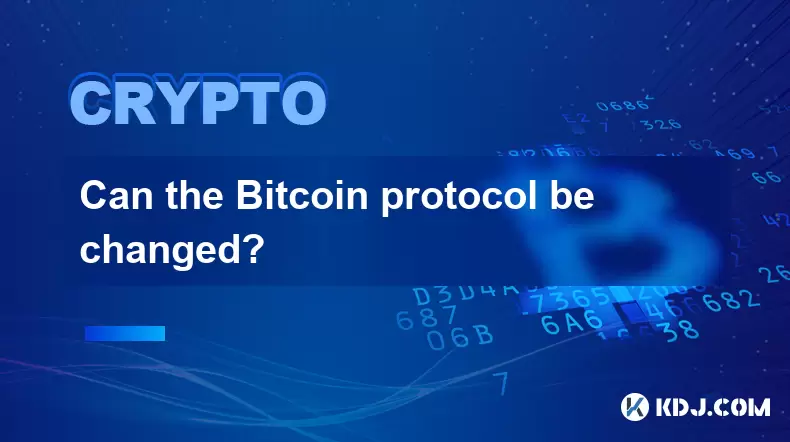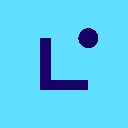-
 bitcoin
bitcoin $117366.968408 USD
0.60% -
 ethereum
ethereum $4611.537173 USD
-0.02% -
 xrp
xrp $3.089373 USD
0.06% -
 tether
tether $1.000286 USD
-0.03% -
 bnb
bnb $986.505381 USD
-0.03% -
 solana
solana $247.629906 USD
0.68% -
 usd-coin
usd-coin $0.999771 USD
-0.03% -
 dogecoin
dogecoin $0.281380 USD
-0.26% -
 cardano
cardano $0.931695 USD
1.71% -
 tron
tron $0.352059 USD
2.40% -
 hyperliquid
hyperliquid $58.226337 USD
-0.94% -
 chainlink
chainlink $24.805082 USD
3.27% -
 avalanche
avalanche $35.625687 USD
10.55% -
 ethena-usde
ethena-usde $1.000922 USD
-0.02% -
 sui
sui $3.883984 USD
2.13%
How to get Bitcoin indicator data via an API for analysis?
Bitcoin indicator data, such as trading volume and on-chain activity, helps traders analyze market trends and make informed decisions using APIs like Glassnode or CoinGecko.
Jul 07, 2025 at 08:56 am

Understanding Bitcoin Indicator Data
Bitcoin indicator data refers to various metrics and statistics that provide insights into the behavior of the Bitcoin market. These indicators can include trading volume, price movements, volatility indices, on-chain transaction activity, miner behavior, and sentiment analysis. For traders and analysts, accessing real-time or historical Bitcoin indicator data is crucial for making informed decisions.
Before diving into API integration, it's important to understand what specific indicators are relevant to your analysis. Common indicators include:
- Moving Averages (MA)
- Relative Strength Index (RSI)
- Volume by Price
- On-Chain Transactions
- Exchange Reserves
Each of these indicators requires a different data source and may be available via specialized APIs offered by cryptocurrency analytics platforms.
Selecting the Right API Provider
To obtain Bitcoin indicator data, you must choose an API provider that offers access to the required datasets. Some of the most popular platforms providing Bitcoin indicator data via API include:
- CoinGecko API
- CoinMarketCap API
- Glassnode Studio API
- CryptoCompare API
- TradingView Crypto API
When selecting an API provider, consider the following factors:
- Data frequency: Does the API offer real-time, hourly, daily, or historical data?
- Rate limits: How many requests per minute/hour are allowed under the free or paid tier?
- Indicator availability: Does the API support the specific technical or fundamental indicators you need?
- Authentication method: Is it using API keys, OAuth, or open endpoints?
For example, Glassnode Studio provides comprehensive blockchain analytics including supply distribution, exchange flows, and miner revenue — all of which are critical for advanced Bitcoin analysis.
Setting Up Your Development Environment
Before interacting with any API, ensure your development environment is ready. Most APIs return data in JSON format, so having a programming language like Python or Node.js installed is recommended.
Here’s how to prepare:
- Install Python 3.x if not already installed
- Set up a virtual environment using
venv - Install necessary libraries such as
requestsandpandas
Once the setup is complete, you're ready to start querying the API endpoints for Bitcoin indicator data.
Accessing Bitcoin Indicator Data via API
Let’s walk through a practical example using Glassnode API to fetch Bitcoin's Exchange Inflow Volume indicator. This indicator shows the amount of Bitcoin flowing into exchanges, which can signal potential selling pressure.
First, sign up on Glassnode Studio and generate an API key.
Then, use the following steps:
- Identify the correct endpoint:
https://api.glassnode.com/v1/metrics/flows/exchange_inflow_volume - Append your API key as a query parameter
- Use a GET request to retrieve the data
Example Python code:
import requestsimport pandas as pd
url = 'https://api.glassnode.com/v1/metrics/flows/exchange_inflow_volume'params = {
'a': 'BTC',
'api_key': 'your_api_key_here'
}
response = requests.get(url, params=params)data = response.json()df = pd.DataFrame(data)print(df.head())
This script will output a DataFrame containing timestamps and corresponding inflow volumes.
Handling Rate Limits and Error Responses
Most APIs impose rate limits to prevent abuse and ensure fair usage. For instance, Glassnode’s free tier allows up to 180 requests per minute. Exceeding this limit results in HTTP 429 errors.
To handle rate limits effectively:
- Implement delays between requests using
time.sleep() - Use retry logic to automatically retry failed requests
- Store successful responses locally to avoid redundant calls
Error handling should also include checking for:
- Invalid API keys (HTTP 401)
- Missing parameters (HTTP 400)
- Server-side issues (HTTP 5xx)
Incorporate try-except blocks in your code to gracefully manage exceptions and log errors for debugging.
Storing and Analyzing Retrieved Data
After retrieving Bitcoin indicator data, the next step is storing and analyzing it. You can store data in:
- CSV files for small datasets
- SQL databases like SQLite or PostgreSQL for structured storage
- NoSQL databases like MongoDB for flexible schema design
Use tools like Pandas for data manipulation and Matplotlib or Plotly for visualization.
Example steps for analysis:
- Calculate moving averages over different time windows
- Correlate on-chain data with price action
- Build custom dashboards combining multiple indicators
By systematically analyzing the retrieved data, you can uncover trends, anomalies, and actionable insights from Bitcoin’s complex market dynamics.
Frequently Asked Questions
Q1: Can I get Bitcoin indicator data without an API?Yes, some platforms offer downloadable CSV files or Excel sheets containing historical indicator data. However, APIs are preferred for automation, real-time updates, and integration with analytical tools.
Q2: Are there free APIs for Bitcoin indicator data?Yes, several providers offer limited free tiers. Examples include CoinGecko, CoinMarketCap, and Glassnode. Free tiers often come with restrictions on request rates and data depth.
Q3: How do I authenticate with a Bitcoin data API?Most APIs use API keys for authentication. You generate a key from the provider's dashboard and include it in your request headers or query parameters.
Q4: What should I do if an API returns incomplete data?Check if the issue is due to missing parameters, incorrect date ranges, or rate limiting. If the problem persists, consult the API documentation or reach out to the provider's support team.
Disclaimer:info@kdj.com
The information provided is not trading advice. kdj.com does not assume any responsibility for any investments made based on the information provided in this article. Cryptocurrencies are highly volatile and it is highly recommended that you invest with caution after thorough research!
If you believe that the content used on this website infringes your copyright, please contact us immediately (info@kdj.com) and we will delete it promptly.
- Green Lantern's Bright Future: US Mint's 2026 Designs Spark Debate!
- 2025-09-20 04:45:14
- CharCoin, Solana, and the Meme Coin Evolution: More Than Just Hype?
- 2025-09-20 04:45:14
- Hypurr NFT Mania: Floor Price Hits $100,000 – What's the Hype?
- 2025-09-20 04:25:14
- Altcoins, ROI, and Smart Investors: Navigating the 2025 Crypto Landscape
- 2025-09-20 04:25:14
- Cryptocurrencies in Nigeria: Trending Coins and Market Insights
- 2025-09-20 04:50:12
- Fantasy Football Premier League: Round 5 - Ace Your Picks!
- 2025-09-20 04:50:12
Related knowledge

Why is Bitcoin considered a revolutionary technology?
Aug 12,2025 at 08:29pm
Decentralization and the Elimination of Central AuthoritiesThe core innovation behind Bitcoin lies in its decentralized architecture, which fundamenta...

Why is Bitcoin considered a revolutionary technology?
Aug 10,2025 at 07:42pm
Decentralized Architecture and Trustless TransactionsBitcoin is considered revolutionary because it introduced a decentralized architecture that opera...

What are the key features of Bitcoin?
Aug 10,2025 at 02:50am
Decentralization and Peer-to-Peer NetworkOne of the most defining characteristics of Bitcoin is its decentralized nature. Unlike traditional financial...

Can the Bitcoin protocol be changed?
Aug 07,2025 at 01:16pm
Understanding the Bitcoin ProtocolThe Bitcoin protocol is the foundational set of rules that govern how the Bitcoin network operates. It defines every...

Can the Bitcoin protocol be changed?
Aug 11,2025 at 01:01am
Understanding the Bitcoin Protocol StructureThe Bitcoin protocol is the foundational set of rules that govern how the Bitcoin network operates. These ...

What happens to Bitcoin transactions once they are confirmed?
Aug 09,2025 at 05:22am
Understanding Bitcoin Transaction ConfirmationWhen a Bitcoin transaction is initiated, it is broadcast to the network and placed in a pool of unconfir...

Why is Bitcoin considered a revolutionary technology?
Aug 12,2025 at 08:29pm
Decentralization and the Elimination of Central AuthoritiesThe core innovation behind Bitcoin lies in its decentralized architecture, which fundamenta...

Why is Bitcoin considered a revolutionary technology?
Aug 10,2025 at 07:42pm
Decentralized Architecture and Trustless TransactionsBitcoin is considered revolutionary because it introduced a decentralized architecture that opera...

What are the key features of Bitcoin?
Aug 10,2025 at 02:50am
Decentralization and Peer-to-Peer NetworkOne of the most defining characteristics of Bitcoin is its decentralized nature. Unlike traditional financial...

Can the Bitcoin protocol be changed?
Aug 07,2025 at 01:16pm
Understanding the Bitcoin ProtocolThe Bitcoin protocol is the foundational set of rules that govern how the Bitcoin network operates. It defines every...

Can the Bitcoin protocol be changed?
Aug 11,2025 at 01:01am
Understanding the Bitcoin Protocol StructureThe Bitcoin protocol is the foundational set of rules that govern how the Bitcoin network operates. These ...

What happens to Bitcoin transactions once they are confirmed?
Aug 09,2025 at 05:22am
Understanding Bitcoin Transaction ConfirmationWhen a Bitcoin transaction is initiated, it is broadcast to the network and placed in a pool of unconfir...
See all articles










































































